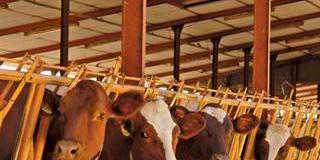The Bureau for Food and Agricultural Policy (Bfap) at the University of Pretoria recently presented its baseline projections for 2007 to 2012 (refer to the results discussed on page 22 in this issue). These provide important guidelines for farmers, agribusiness and policymakers. However there is still a lot of misunderstanding about the proper way to use baseline projections in future planning.
Baseline projections are not predictions. They are indications of what a future scenario might be if a specific set of assumptions holds true. Assumptions are made about international product prices, exchange rates, import tariffs, and population dynamics. These are then used as inputs into models that estimate future production and prices in a dynamic model. The model outcomes are dependent on the level of the assumptions. In turn, if assumptions are realised, actual outcome will closely match model outcome.
Even if assumptions are fully realised, predicted and actual outcome will still differ as various institutional and other restrictions hinder the working of the free-market system, one of the main assumptions made in the models. For example, while the 2006 Bfap baseline predicted an increase in milk producer prices from 2005, the increase only happened in 2007, since milk buyers and retailers had the market power to keep producer prices in check during 2005 and 2006.
Thus, the difference between the Bfap baseline prices and actual prices reflects the efficiency of the different marketing channels. Running the model with actual values for the assumptions will provide a best-practice outlook, which one can compare with the actual results to find out why there are differences. Agricultural industries should use the Bfap models to study the efficiency of their marketing channels. Ferdi Meyer and his band of agricultural economists are able and willing to assist industries with this.
How to evaluate Bfap baseline projections
As model results depend on a series of basic assumptions, users of the Bfap predictions need to study these assumptions in terms of their own knowledge of industry. The knowledge available within a specific industry will always exceed Bfap’s, and even that of the big-brother of baseline projections, the Food and Agricultural Policy Research Institute (Fapri) in the US. For example, Bfap predicts that the world skimmed and full-cream milk powder price will run at slightly higher than US 500 per ton for the period 2007 to 2010. This is based on Fapri’s projection.
But, since May 2006 world dairy product prices have doubled and milk powder now sells at US 600 and more per ton. Clearly then, the Bfap projections can be considered pessimistic. The evaluation of general assumptions is more difficult. Bfap uses a rand/US dollar exchange rate of R7,47/US dollar for 2007, weakening to R9,84 by 2012. The rand may devalue quicker, or do a complete turnaround and strengthen over the next few years. Although all fundamental factors show that the rand will lose value vis-à-vis the US dollar, economic problems in the US may result in the opposite happening in the short term. Bfap also provides a stochastic analysis of the possible value of the rand. There is a small probability of the rand strengthening to below R7 per dollar during 2007.
The baseline projections for product prices and production are based on these main assumptions. Any change in the assumptions will impact on the relevant baseline projections. For example, if one changes world dairy product prices, domestic producer prices will also increase. A superficial analysis shows that producer prices for milk will probably rise from R2,70 in 2007 to R3,50 per litre by 2021. Industries need to personalise the baseline projections for their own use. The best way of doing this is to work in cooperation with Ferdi Meyer and his team.
Farm level application
In the US, both the Fapri baseline projections and US agriculture department projections are used with farm-level models to evaluate the impact of policy decisions on farm level. Some years ago the Maize Trust funded the development of a farmlevel livestock model that was originally designed to enable farm-level evaluation of policy impact. However, the complete model never really got off the ground. The logical extension of the Bfap models is a farm-level model that can evaluate the impact of policy changes on farm level. Apparently the people at Bfap have done some work in this direction. Let us hope that such a model becomes available soon.
If the current round of WTO negotiations gets back on line we will urgently need it to evaluate the impact of tariff proposals. The Bfap baseline projections provide valuable information for agricultural industries and producers. If used with the necessary care and industry-specific knowledge, the Bfap baseline projections provide valuable information to farmers, processors and policy-makers. Dr Koos Coetzee is an agricultural economist at the MPO. All opinions expressed in this column are his own.





